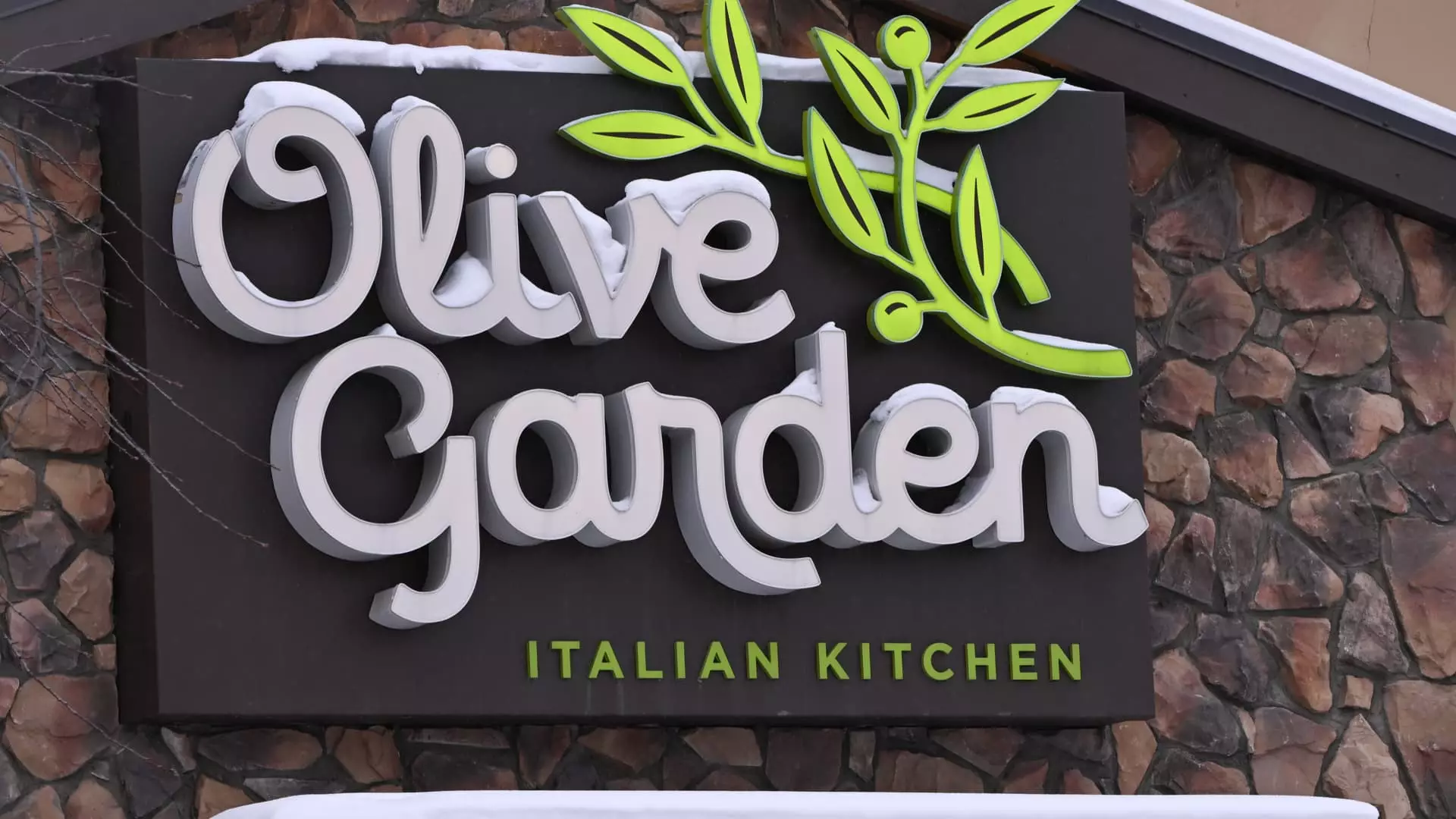Darden Restaurants, the parent company of popular chains like Olive Garden and LongHorn Steakhouse, recently reported earnings that can only be described as an underwhelming conundrum. Despite boasting a revenue increase, their same-store sales fail to inspire confidence, leaving investors scratching their heads. The disconnect between revenue growth and sales expectations raises critical questions about the company’s strategy moving forward. Analysts had hoped for better performance from Darden’s crown jewels, particularly Olive Garden and LongHorn, which historically have been the bedrock of the company’s success.
Darden’s latest figures reveal a net income of $323.4 million, translating to $2.74 per share—up from last year but falling short of the growth momentum expected in a recovering economy. It’s astounding how a company can continue to report increased revenues yet struggle to convert that into robust same-store sales, which are stagnating under 1%. The particularly lackluster growth of flagship brands signals to investors that the company’s market penetration may be on shaky ground.
Underwhelming Brands: A Call for Transformation
The lack of excitement surrounding both Olive Garden and LongHorn Steakhouse highlights an urgent need for innovation or revitalization within these brands. Olive Garden’s meager 0.6% growth in same-store sales, far from the anticipated 1.5%, suggests that loyal customers might not be as enthusiastic about the offerings as previously assumed. Meanwhile, LongHorn’s sales performance saw only a 2.6% increase, while analysts predicted at least 5%. This underperformance raises critical red flags about consumer demand and the exploration of new culinary avenues.
It signals that simply maintaining the status quo may not be viable in an increasingly competitive dining landscape. Consumers, especially in a post-pandemic world, are gravitating towards unique dining experiences that offer value beyond just familiar flavors. The lack of innovative marketing strategies or refreshed menus at these restaurants could be a recipe for disaster as patrons venture towards emerging dining experiences elsewhere.
The Dark Side of Expansion: A Growing Burden
Interestingly, while Darden’s acquisition of Chuy’s has bolstered their overall revenue to $3.16 billion, which is commendable, it also casts a shadow over the existing brands. The push towards aggressive expansion without ensuring that legacy brands are equally revitalized can lead to a dilution of brand quality. Chuy’s contributions won’t even factor into same-store sales metrics until fiscal fourth quarter of 2026; that leaves a sizeable gap in performance that could deter investors looking for immediate returns.
Darden has reduced its forecast for adjusted earnings while providing expanded revenue goals. This clearly illustrates a precarious balancing act. Investors might be wary that these revised expectations reflect not only growth ambitions but a hesitant, perhaps reactive stance towards ongoing market conditions rather than a proactive roadmap for thriving.
As options narrow in the face of fierce competition, Darden Restaurants must begin a serious re-evaluation of its approach. The sustained success of any company fundamentally relies not just on past achievements but an acute awareness of market trends and consumer desires. The thought of stagnation in core brands while pursuing bigger acquisitions could lead Darden onto a treacherous path, and it’s crucial for management to reflect on this dichotomy before the consequences become dire.

